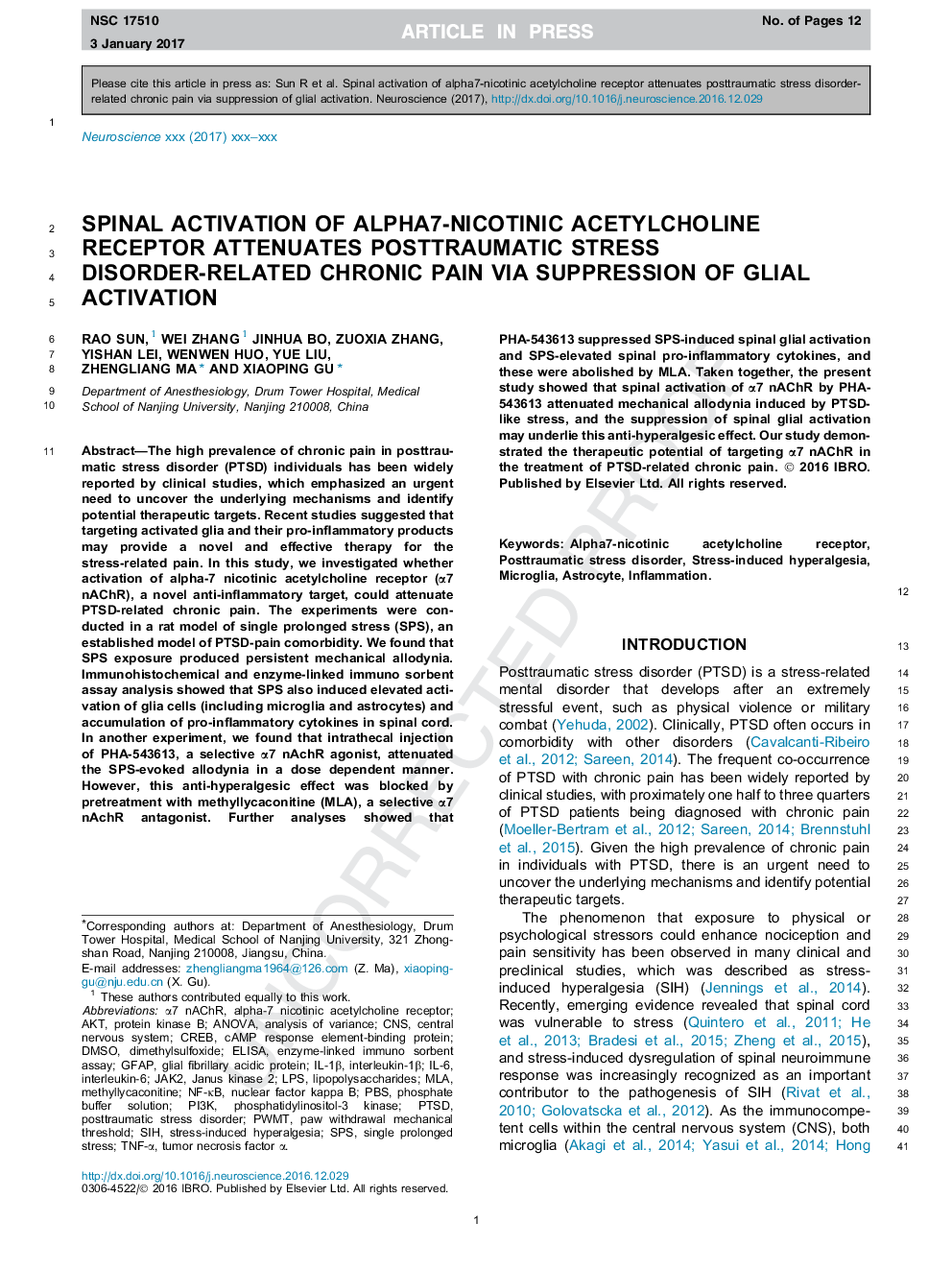| Article ID | Journal | Published Year | Pages | File Type |
|---|---|---|---|---|
| 5737767 | Neuroscience | 2017 | 12 Pages |
Abstract
The high prevalence of chronic pain in posttraumatic stress disorder (PTSD) individuals has been widely reported by clinical studies, which emphasized an urgent need to uncover the underlying mechanisms and identify potential therapeutic targets. Recent studies suggested that targeting activated glia and their pro-inflammatory products may provide a novel and effective therapy for the stress-related pain. In this study, we investigated whether activation of alpha-7 nicotinic acetylcholine receptor (α7 nAChR), a novel anti-inflammatory target, could attenuate PTSD-related chronic pain. The experiments were conducted in a rat model of single prolonged stress (SPS), an established model of PTSD-pain comorbidity. We found that SPS exposure produced persistent mechanical allodynia. Immunohistochemical and enzyme-linked immuno sorbent assay analysis showed that SPS also induced elevated activation of glia cells (including microglia and astrocytes) and accumulation of pro-inflammatory cytokines in spinal cord. In another experiment, we found that intrathecal injection of PHA-543613, a selective α7 nAchR agonist, attenuated the SPS-evoked allodynia in a dose dependent manner. However, this anti-hyperalgesic effect was blocked by pretreatment with methyllycaconitine (MLA), a selective α7 nAchR antagonist. Further analyses showed that PHA-543613 suppressed SPS-induced spinal glial activation and SPS-elevated spinal pro-inflammatory cytokines, and these were abolished by MLA. Taken together, the present study showed that spinal activation of α7 nAChR by PHA-543613 attenuated mechanical allodynia induced by PTSD-like stress, and the suppression of spinal glial activation may underlie this anti-hyperalgesic effect. Our study demonstrated the therapeutic potential of targeting α7 nAChR in the treatment of PTSD-related chronic pain.
Keywords
PWMTMLAIL-1βJAK2α7 nAChRGFAPSPSIL-6LPSPBSJanus Kinase 2alpha-7 nicotinic acetylcholine receptorCREBPI3KSIHNF-κBDMSOpaw withdrawal mechanical thresholdAstrocyteenzyme-linked immuno sorbent assayAktPosttraumatic stress disorderPTSDinflammationinterleukin-6Interleukin-1βanalysis of varianceANOVAELISASingle prolonged stresstumor necrosis factor αCNSDimethylsulfoxidecentral nervous systemTNF-αnuclear factor kappa Bphosphatidylinositol-3 kinaseLipopolysaccharidesmethyllycaconitinephosphate buffer solutionMicrogliaStress-induced hyperalgesiaGlial fibrillary acidic proteincAMP response element-binding proteinprotein kinase B
Related Topics
Life Sciences
Neuroscience
Neuroscience (General)
Authors
Rao Sun, Wei Zhang, Jinhua Bo, Zuoxia Zhang, Yishan Lei, Wenwen Huo, Yue Liu, Zhengliang Ma, Xiaoping Gu,
